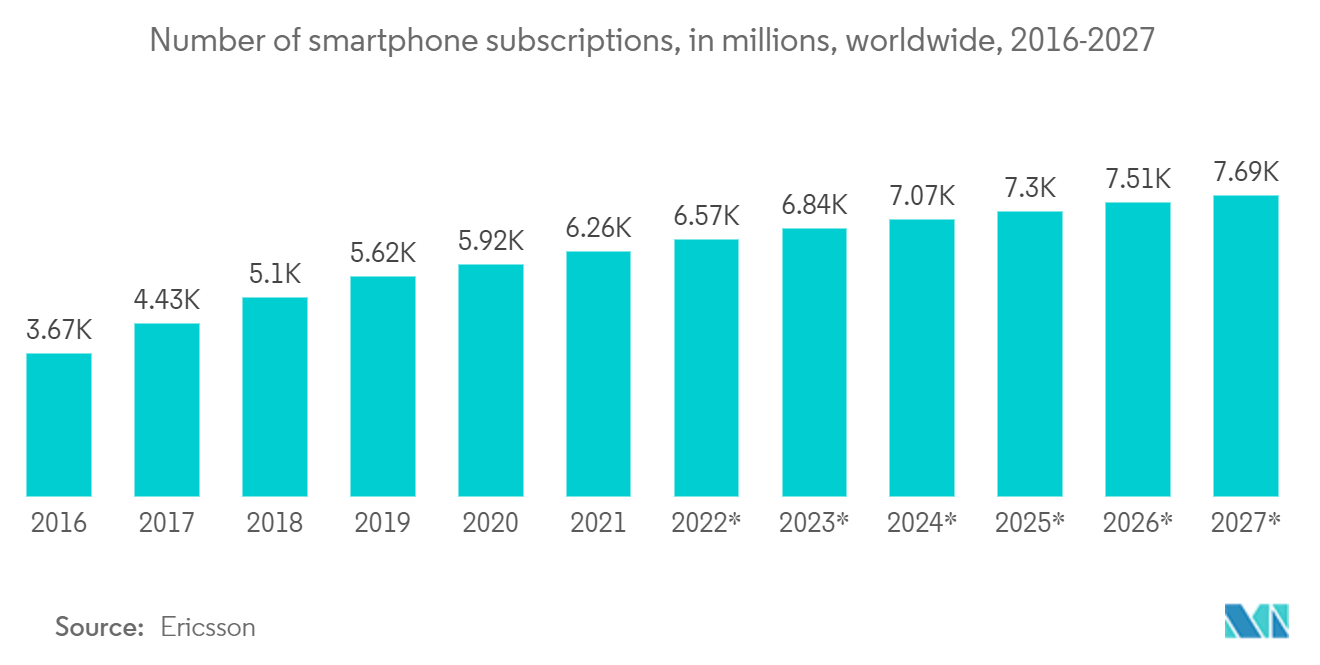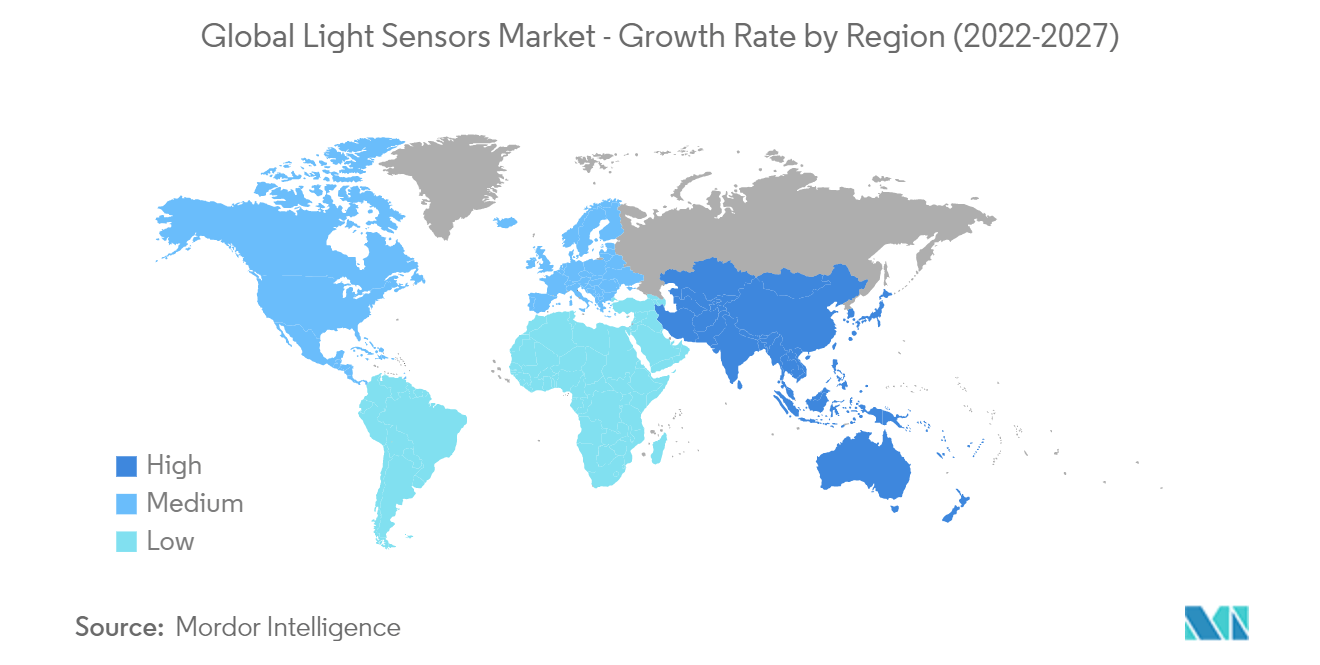Market Trends of Global Light Sensors Industry
This section covers the major market trends shaping the Light Sensors Market according to our research experts:
Consumer Electronics is Expected to Hold a Major Share
- The consumer electronics sector's expansion in the light sensors market has been propelled by the increasing use of proximity sensors and ambient light sensors in mobile devices. Due to a surge in the use of light sensors by the leading OEMs, including Samsung Electronics Co., Ltd., APAC may present prospects for growth (South Korea). The South Korean company Samsung Electronics Co., Ltd. is a significant player in the market for light sensors. It has integrated light sensors into a variety of product categories, including mobile devices like the Samsung Galaxy S6 and Samsung Galaxy S6 edge, that carry out specific tasks like proximity detection.
- Global demand for smart gadgets, such as LED televisions, smartphones, and smart lighting systems, has risen as a result of miniaturization and improvements in sensor technology. Different sensor technologies and communication interfaces are at the heart of these gadgets. The adoption of various sensors across sectors is projected to increase with the advent of connected products and 5G communication technology. Additionally, optical sensors are frequently employed in both residential and commercial wearable electronics equipment.
- Smartphones, LCD/LED televisions, and laptops are some of the applications that are driving the increase in demand for light sensor devices. As a result of the sensors' ability to automatically adjust the screen brightness based on how much ambient light these devices get, electricity savings are made possible. The control of lighting utilizing various digital sensing components involving illuminance detectors is another key emphasis of contemporary IoT lighting platforms.
- The proximity detection module and integrated ambient light sensor from AMS AG were released in July 2020, enabling mobile handset Original Equipment Manufacturers (OEMs) to create mobile handsets with almost bezel-less screens. In comparison to other devices on the market, the module (TMD2755) is 40% lower in area and 60% smaller in volume. Moreover, TMD2755 aids mobile phone manufacturers' efforts to expand the viewable display area by allowing the light-sensing and proximity features to be contained in a thinner bezel. This has been cited as a major contributor to rising consumer interest in mobile phones in the mid-range market segment.
- Electronic devices like mobile phones, LCDs, and LEDs are increasingly using light sensor devices to automatically alter the screen brightness in reaction to the quantity of light they are exposed to. This capability helps these devices conserve electricity. Light sensors are expanding in this market as a result of the growing focus on using facial recognition in consumer electronics, such as mobile phonesand tablets, for access and authentication, account accessibility, and security/identity fraud protection.
- The surge in the adoption of wearable devices and innovative applications in the biomedical sector may boost the growth of the market. However, the extra costs incurred due to the incorporation of sensors in devices and reduction in the life of the device are expected to hinder the market growth.

Asia-Pacific is Expected to Register a Significant Growth Rate
- Asia-Pacific is expected to dominate the light sensors market, owing to its larger population size and increasing demand and production of smartphones and other consumer electronics. For instance, according to India Cellular and Electronics Association (ICEA), the value of mobile phone production in India increased from INR 1,700 billion in 2019 to INR 2,149 billion in 2020. In 2021, the value totaled to INR 2,227 billion, despite the impact of the coronavirus pandemic.
- An increase in the adoption rate of handheld devices with inbuilt light sensors is also one of the key factors contributing to the growth of the light sensors market in the region.
- With an increase in the safety concerns among the consumers in the developing economies, such as India and the ASEAN countries, the automobile manufacturers are incorporating more sensors in low-cost vehicles. This is expected to drive the demand for light sensors in the foreseeable future.
- Further, the growing emphasis on the adoption of the latest technologies, such as the Internet of Things (IoT), facial recognition, and government regulations in the emerging economies to enhance security across various industry verticals are leading to increased deployment of light sensors, which is, in turn, boosting the growth of the industry in the region.
- The COVID-19 outbreak is also expected to impact the growth of the Light sensors market share. Primarily due to the governments in China, Japan, and Singapore starting to invest in the development of smart cities. Furthermore, the widespread use of light sensors in scanners, Quick Response (QR) codes, and intrusion detection systems (IDS) is driving market expansion.


